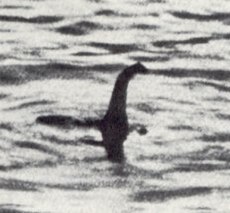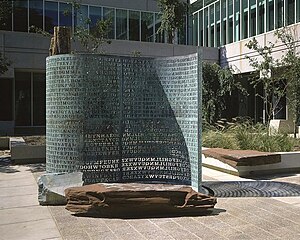REVEALED: Top 10 Unsolved Mysteries of The World
Top 10 unsolved mysteries of the world
- Antikythera mechanism
The Antikythera mechanism is an ancient Greek analogue computer used to predict astronomical positions and eclipses for calendar and astrological purposes decades in advance. It could also be used to track the four-year cycle of athletic games which was similar to an Olympiad, the cycle of the ancient Olympic Games.
The artefact was retrieved from the sea in 1901, and identified on 17 May 1902 as containing a gear wheel by archaeologist Valerios Stais, among wreckage retrieved from a wreck off the coast of the Greek island Antikythera. The instrument is believed to have been designed and constructed by Greek scientists and has been variously dated to about 87 BC, or between 150 and 100 BC, or to 205 BC, or to within a generation before the shipwreck, which has been dated to approximately 70-60 BC.
The knowledge of this technology was lost at some point in antiquity, and technological works approaching its complexity and workmanship did not appear again until the development of mechanical astronomical clocks in Europe in the fourteenth century. All known fragments of the Antikythera mechanism are kept at the National Archaeological Museum in Athens, along with a number of artistic reconstructions/replicas of how the mechanism may have looked and worked.

- Voynich manuscript
The Voynich manuscript is an illustrated codex hand-written in an unknown writing system. The vellum on which it is written has been carbon-dated to the early 15th century, and it may have been composed in Northern Italy during the Italian Renaissance.
Some of the pages are missing, with around 240 remaining. No one has yet demonstrably deciphered the text, and it has become a famous case in the history of cryptography. The mystery of the meaning and origin of the manuscript has excited the popular imagination, making the manuscript the subject of novels and speculation. None of the many hypotheses proposed over the last hundred years has yet been independently verified.

- Bermuda Triangle
The Bermuda Triangle, also known as the Devil's Triangle or Hurricane Alley, is a loosely-defined region in the western part of the North Atlantic Ocean, where a number of aircraft and ships are said to have disappeared under mysterious circumstances. Most reputable sources dismiss the idea that there is any mystery. The vicinity of the Bermuda Triangle is amongst the most heavily traveled shipping lanes in the world, with ships frequently crossing through it for ports in the Americas, Europe and the Caribbean islands. Cruise ships and pleasure craft regularly sail through the region, and commercial and private aircraft routinely fly over it.
Popular culture has attributed various disappearances to the paranormal or activity by extraterrestrial beings. Documented evidence indicates that a significant percentage of the incidents were spurious, inaccurately reported, or embellished by later authors.
- Loch Ness Monster
In Scottish folklore, the Loch Ness Monster or Nessie is a creature said to inhabit Loch Ness in the Scottish Highlands. It is often described as large in size with a long neck and one or more humps protruding from the water. Popular interest and belief in the creature has varied since it was brought to worldwide attention in 1933. Evidence of its existence is anecdotal, with a few disputed photographs and sonar readings.
The scientific community regards the Loch Ness Monster as a phenomenon without biological basis, explaining sightings as hoaxes, wishful thinking, and the misidentification of mundane objects.

- Stonehenge
Stonehenge is a prehistoric monument in Wiltshire, England, two miles (3 km) west of Amesbury. It consists of a ring of standing stones, with each standing stone around 13 feet (4.0 m) high, seven feet (2.1 m) wide and weighing around 25 tons. The stones are set within earthworks in the middle of the most dense complex of Neolithic and Bronze Age monuments in England, including several hundred burial mounds.
Stonehenge could have been a burial ground from its earliest beginnings. Deposits containing human bone date from as early as 3000 BC, when the ditch and bank were first dug, and continued for at least another five hundred years.

- Shroud of Turin
The Shroud of Turin or Turin Shroud is a length of linen cloth bearing the negative image of a man who is alleged to be Jesus of Nazareth. It is kept in the Chapel of the Holy Shroud, which is located within a complex of buildings which includes the Turin Cathedral, the Royal Palace of Turin, and the Palazzo Chiablese in Turin, Piedmont, northern Italy. The cloth itself is believed by some to be the burial shroud that Jesus was wrapped in when he was buried after crucifixion. It is first securely attested in 1390, when a local bishop wrote that the shroud was a forgery and that an unnamed artist had confessed. Radiocarbon dating of a sample of the shroud material is consistent with this date.
The Catholic Church has neither formally endorsed nor rejected the shroud, but in 1958 Pope Pius XII approved of the image in association with the devotion to the Holy Face of Jesus. Pope John Paul II called the Shroud "a mirror of the Gospel". Other Christian denominations, such as Anglicans and Methodists, have also shown devotion to the Shroud of Turin.
- Area 51
The United States Air Force facility commonly known as Area 51 is a highly classified remote detachment of Edwards Air Force Base, within the Nevada Test and Training Range. According to the Central Intelligence Agency (CIA), the correct names for the facility are Homey Airport and Groom Lake, though the name Area 51 was used in a CIA document from the Vietnam War. The facility has also been referred to as Dreamland and Paradise Ranch, among other nicknames. USAF public relations has referred to the facility as "an operating location near Groom Dry Lake".
The base's current primary purpose is publicly unknown; however, based on historical evidence, it most likely supports the development and testing of experimental aircraft and weapons systems (black projects). The intense secrecy surrounding the base has made it the frequent subject of conspiracy theories and a central component to unidentified flying object (UFO) folklore. Although the base has never been declared a secret base, all research and occurrences in Area 51 are Top Secret/Sensitive Compartmented Information. On 25 June 2013, following a Freedom of Information Act (FOIA) request filed in 2005, the CIA publicly acknowledged the existence of the base for the first time, declassifying documents detailing the history and purpose of Area 51.
- Georgia Guidestones
The Georgia Guidestones are a granite monument erected in 1980 in Elbert County, Georgia, in the United States. A set of 10 guidelines is inscribed on the structure in eight modern languages and a shorter message is inscribed at the top of the structure in four ancient language scripts.
The monument stands at an approximate elevation of 750 feet (230 m) above sea level, about 90 miles (140 km) east of Atlanta, 45 miles (72 km) from Athens, Georgia and 9 miles (14 km) north of the center of the city of Elberton.
One slab stands in the center, with four arranged around it. A capstone lies on top of the five slabs, which are astronomically aligned. An additional stone tablet, which is set in the ground a short distance to the west of the structure, provides some notes on the history and purpose of the guidestones. The structure is sometimes referred to as an "American Stonehenge". The monument is 19 feet 3 inches (5.87 m) tall, made from six granite slabs weighing 237,746 pounds (107,840 kg) in all. The anonymity of the guidestones' authors and their apparent advocacy of population control, eugenics and internationalism, have made them a target for controversy and conspiracy theory.

- Kryptos
Kryptos is a sculpture by the American artist Jim Sanborn located on the grounds of the Central Intelligence Agency (CIA) in Langley, Virginia. Since its dedication on November 3, 1990, there has been much speculation about the meaning of the four encrypted messages it bears. Of the four messages, the first three have been solved, while the fourth message remains as one of the most famous unsolved codes in the world. The sculpture continues to be of interest to cryptanalysts, both amateur and professional, who are attempting to decipher the fourth passage. The artist has so far given two clues to this passage.

- Zodiac Killer
The Zodiac Killer is the pseudonym of an unidentified serial killer who operated in Northern California from at least the late 1960s to the early 1970s. The killer's identity remains unknown. The Zodiac murdered victims in Benicia, Vallejo, Lake Berryessa, and San Francisco between December 1968 and October 1969. Four men and three women between the ages of 16 and 29 were targeted. The killer originated the name "Zodiac" in a series of taunting letters sent to the local Bay Area press. These letters included four cryptograms (or ciphers). Of the four cryptograms sent, only one has been definitively solved.
Suspects have been named by law enforcement and amateur investigators, but no conclusive evidence has surfaced. The San Francisco Police Department marked the case "inactive" in April 2004, but re-opened it at some point prior to March 2007. The case also remains open in the city of Vallejo, as well as in Napa County and Solano County. The California Department of Justice has maintained an open case file on the Zodiac murders since 1969.



0 comments